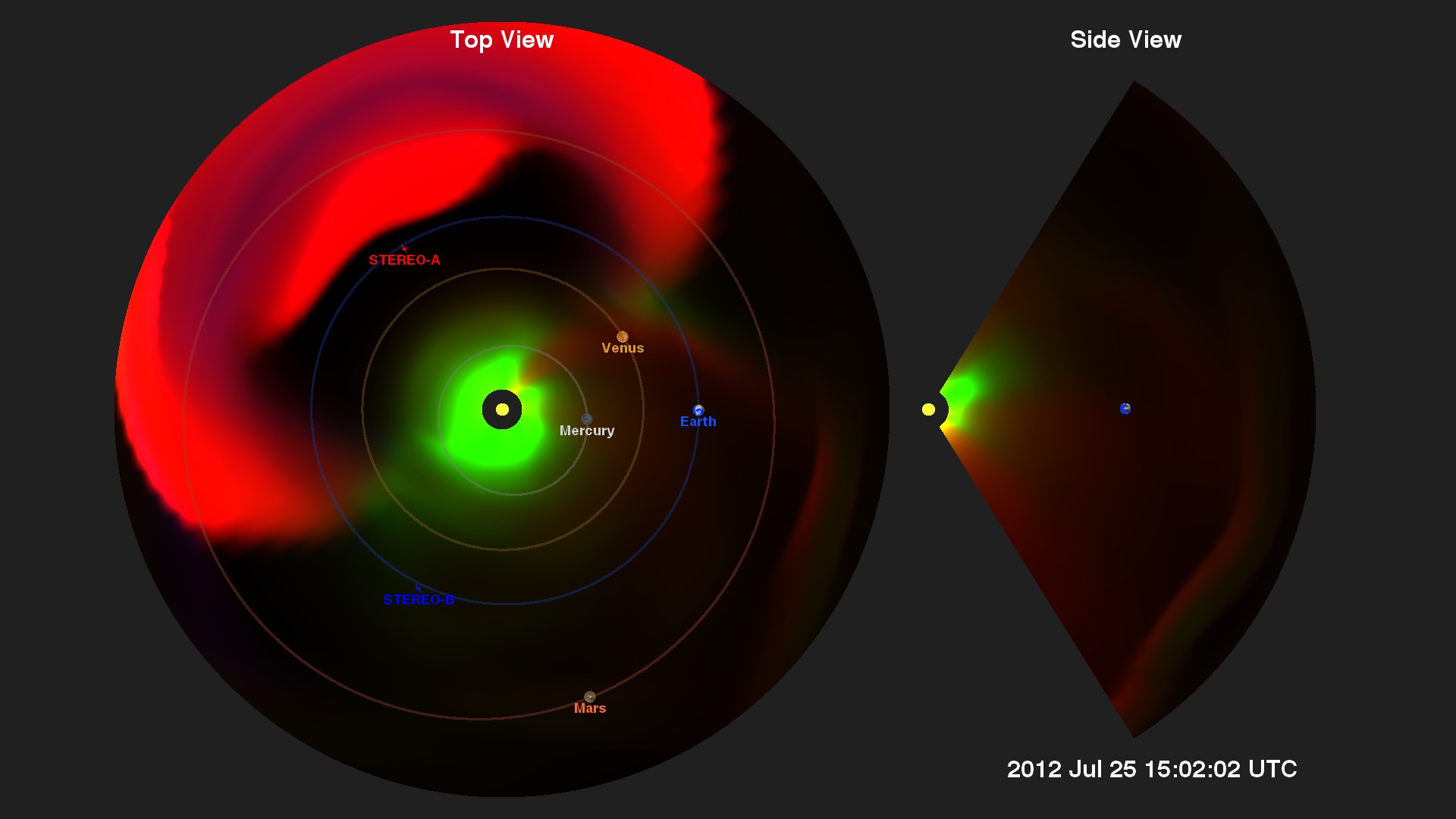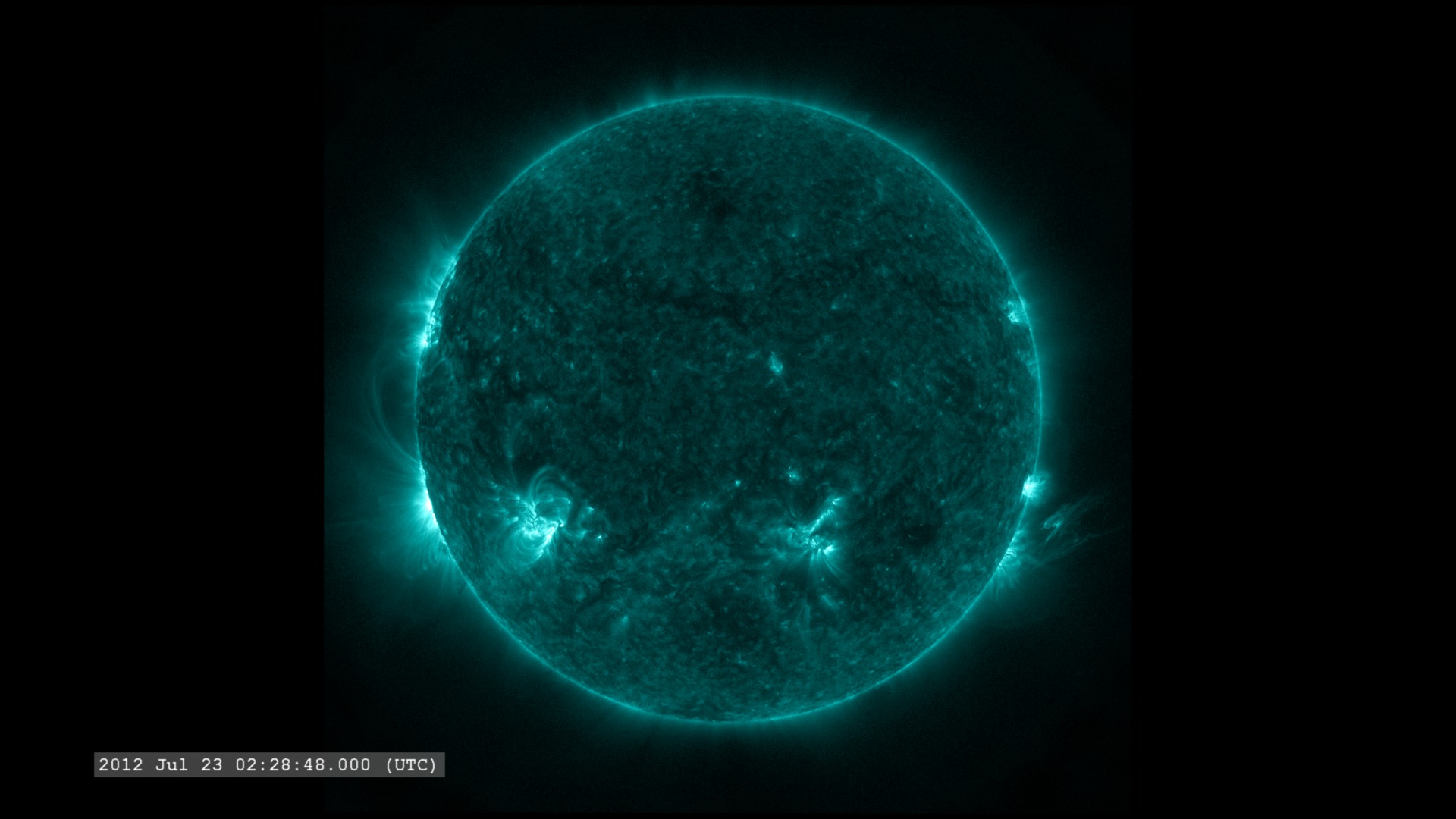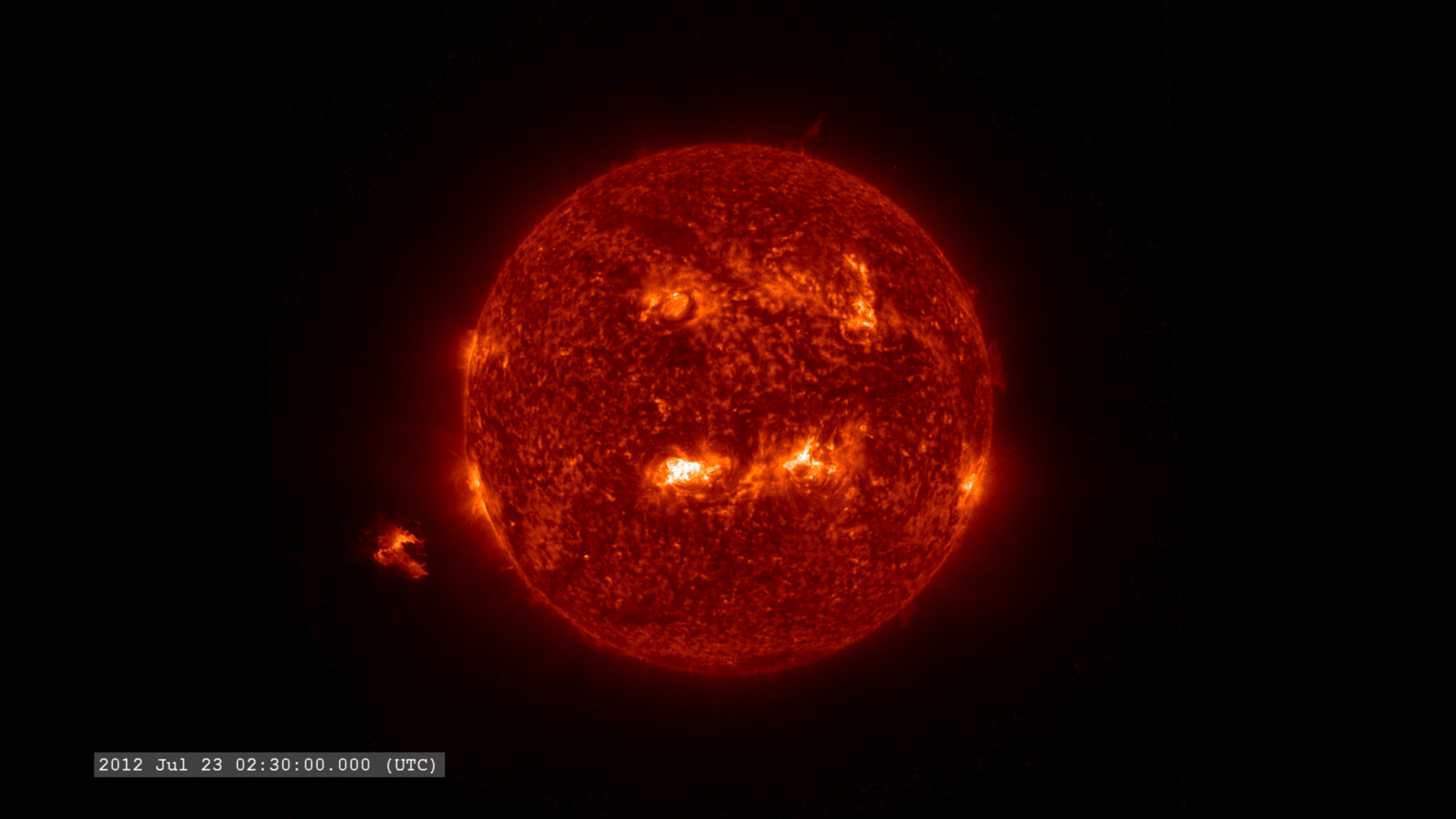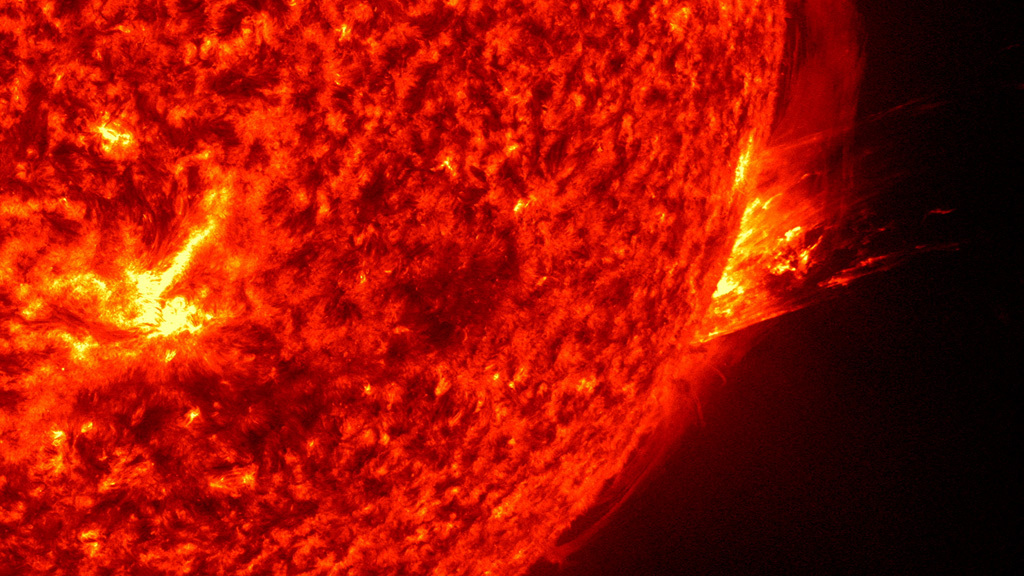NASA's Many Views of a Massive CME
On July 23, 2012, a massive cloud of solar material erupted off the sun's right side, zooming out into space. It soon passed one of NASA's Solar Terrestrial Relations Observatory, or STEREO, spacecraft, which clocked the CME as traveling between 1,800 and 2,200 miles per second as it left the sun. This was the fastest CME ever observed by STEREO.
Two other observatories – NASA's Solar Dynamics Observatory and the joint European Space Agency/NASA Solar and Heliospheric Observatory — witnessed the eruption as well. The July 2012 CME didn't move toward Earth, but watching an unusually strong CME like this gives scientists an opportunity to observe how these events originate and travel through space.
STEREO's unique viewpoint from the sides of the sun combined with the other two observatories watching from closer to Earth helped scientists create models of the entire July 2012 event. They learned that an earlier, smaller CME helped clear the path for the larger event, thus contributing to its unusual speed.
Such data helps advance our understanding of what causes CMEs and improves modeling of similar CMEs that could be Earth-directed.
Three NASA observatories work together to help scientists track the journey of a massive coronal mass ejection, or CME, in July 2012.
Credit: NASA/SDO/STEREO/ESA/SOHO/Wiessinger
Watch this video on the NASA Goddard YouTube channel.
For complete transcript, click here.
Solar and Heliospheric Observatory coronagraph view of the July 23, 2012 CME. Frames cover July 22-24.
Credit: ESA/NASA/SOHO
Solar and Heliospheric Observatory coronagraph view of the July 23, 2012 CME. Frames cover July 22-24.
Credit: ESA/NASA/SOHO
For More Information
Credits
Please give credit for this item to:
NASA's Goddard Space Flight Center. However, individual items should be credited as indicated above.
-
Animators
- Tom Bridgman (Global Science and Technology, Inc.)
- Scott Wiessinger (USRA)
-
Video editor
- Scott Wiessinger (USRA)
-
Narrator
- Erin McKinley (OSU)
-
Producer
- Scott Wiessinger (USRA)
-
Project support
- Aaron E. Lepsch (ADNET Systems, Inc.)
-
Writers
- Scott Wiessinger (USRA)
- Karen Fox (ADNET Systems, Inc.)
Release date
This page was originally published on Wednesday, September 24, 2014.
This page was last updated on Saturday, January 4, 2025 at 12:18 AM EST.
Series
This page can be found in the following series:Tapes
The media on this page originally appeared on the following tapes:-
NASA's Heliophysics Fleet Watches the July 2012 CME
(ID: 2014078)
Thursday, September 11, 2014 at 4:00AM
Produced by - Robert Crippen (NASA)
Datasets used
-
LASCO/C2 (C2) [SOHO: Large Angle Spectrometric COronagraph (LASCO)]
ID: 160This dataset can be found at: http://sohowww.nascom.nasa.gov
See all pages that use this dataset -
LASCO/C3 (C3) [SOHO: Large Angle Spectrometric COronagraph (LASCO)]
ID: 161This dataset can be found at: http://sohowww.nascom.nasa.gov
See all pages that use this dataset -
[SDO]
ID: 168This dataset can be found at: http://sdo.gsfc.nasa.gov/
See all pages that use this dataset -
[STEREO-A: Coronograph 2 (COR2)]
ID: 187This dataset can be found at: https://stereo.gsfc.nasa.gov
See all pages that use this dataset -
[STEREO-A: Heliospheric Imager 1 (HI-1)]
ID: 188This dataset can be found at: https://stereo.gsfc.nasa.gov
See all pages that use this dataset -
304 Angstroms [STEREO: Extreme UltraViolet Imager (EUVI)]
ID: 624This dataset can be found at: https://stereo.gsfc.nasa.gov
See all pages that use this dataset -
AIA 304 (304 Filter) [SDO: AIA]
ID: 677This dataset can be found at: http://jsoc.stanford.edu/
See all pages that use this dataset -
AIA 211 (211 Filter) [SDO: AIA]
ID: 678This dataset can be found at: http://jsoc.stanford.edu/
See all pages that use this dataset -
AIA 171 (171 Filter) [SDO: AIA]
ID: 680This dataset can be found at: http://jsoc.stanford.edu/
See all pages that use this dataset -
AIA 131 (131 Filter) [SDO: AIA]
ID: 730This dataset can be found at: http://jsoc.stanford.edu/
See all pages that use this dataset -
EUVI (304 Angstroms) [STEREO-B: Extreme UltraViolet Imager]
ID: 833This dataset can be found at: https://stereo.gsfc.nasa.gov
See all pages that use this dataset -
COR2 [STEREO-B: Coronograph 2]
ID: 834This dataset can be found at: https://stereo.gsfc.nasa.gov
See all pages that use this dataset
Note: While we identify the data sets used on this page, we do not store any further details, nor the data sets themselves on our site.




